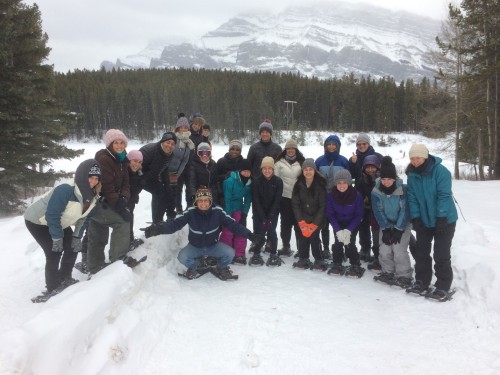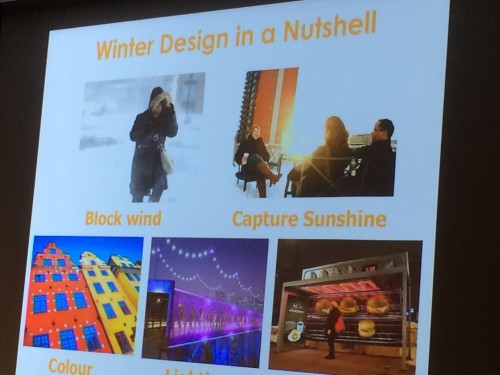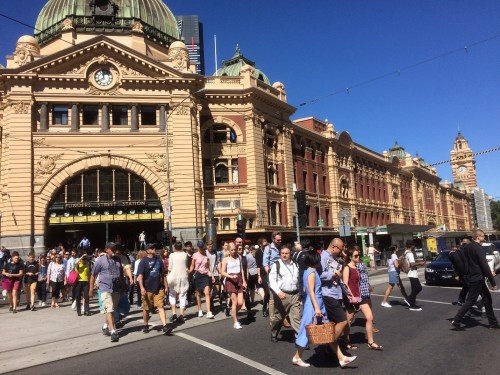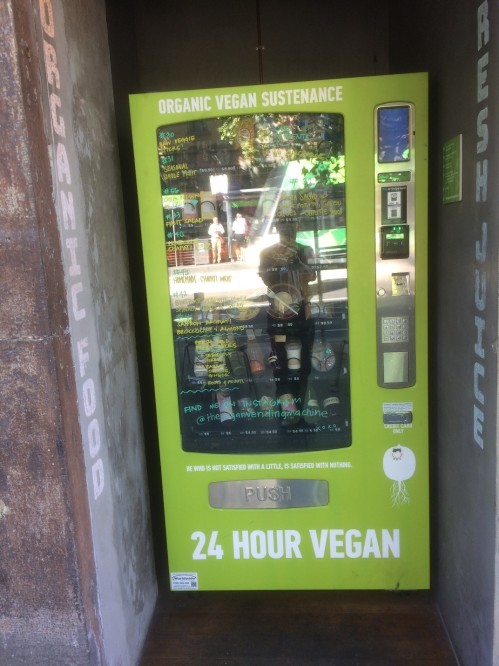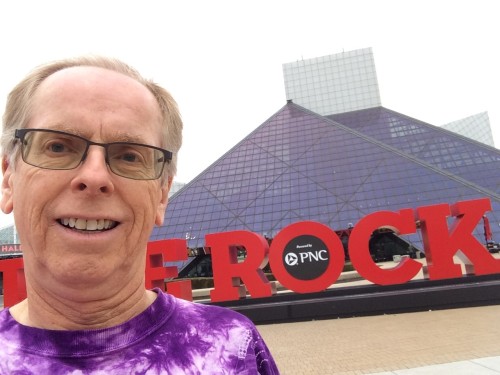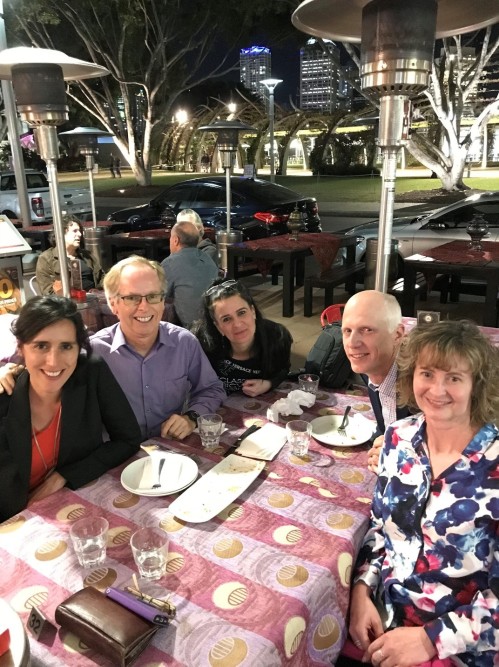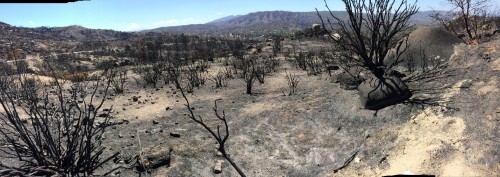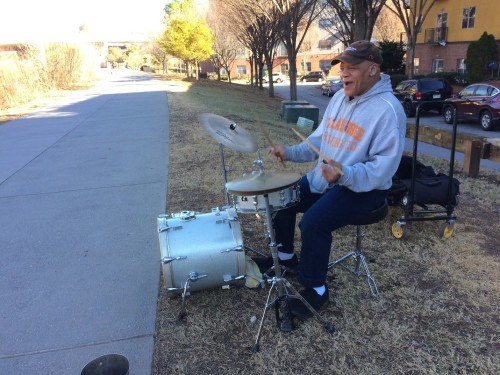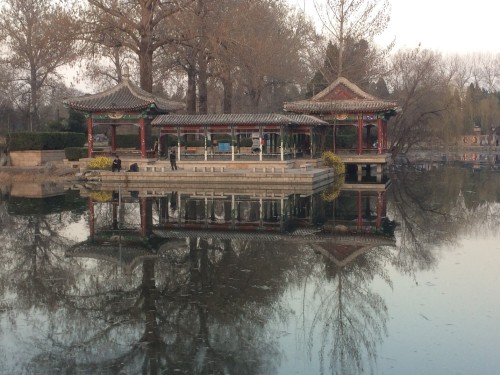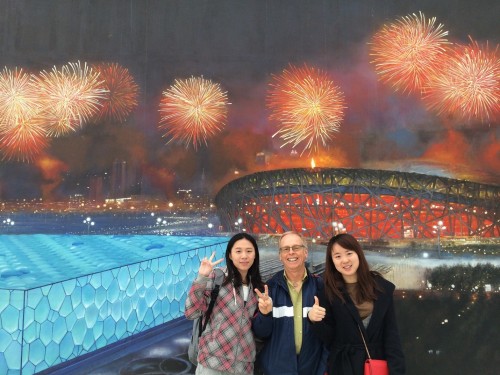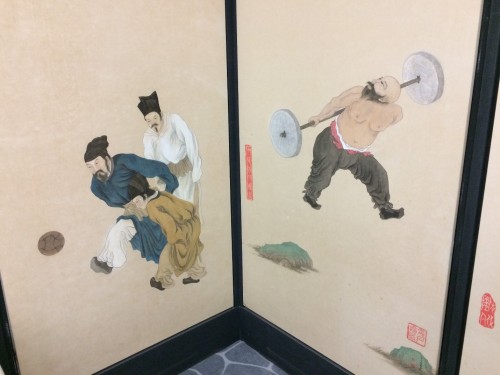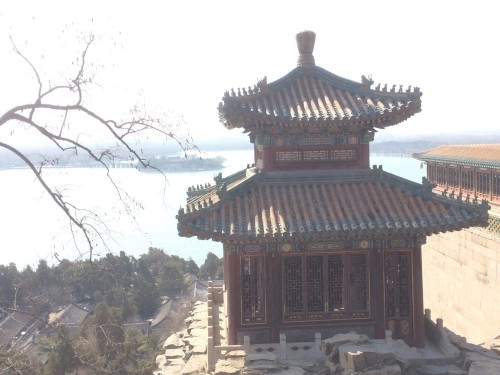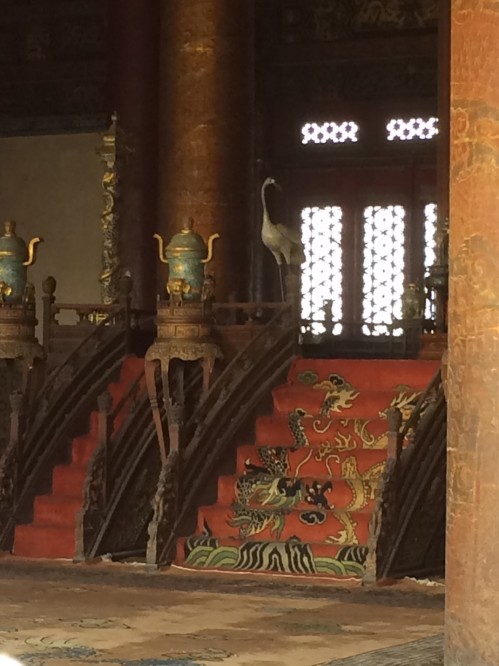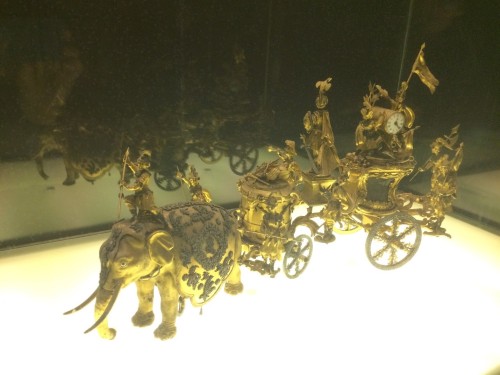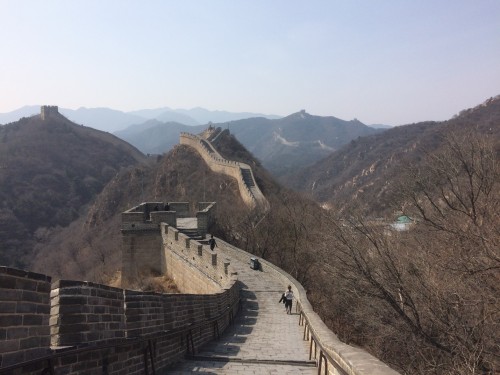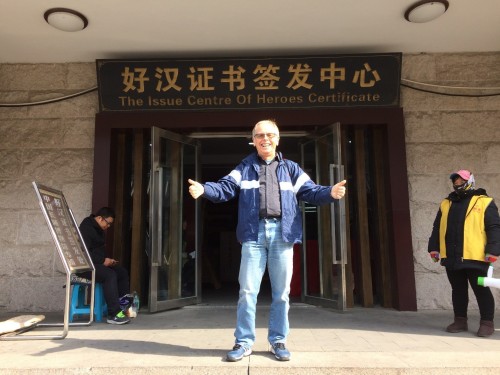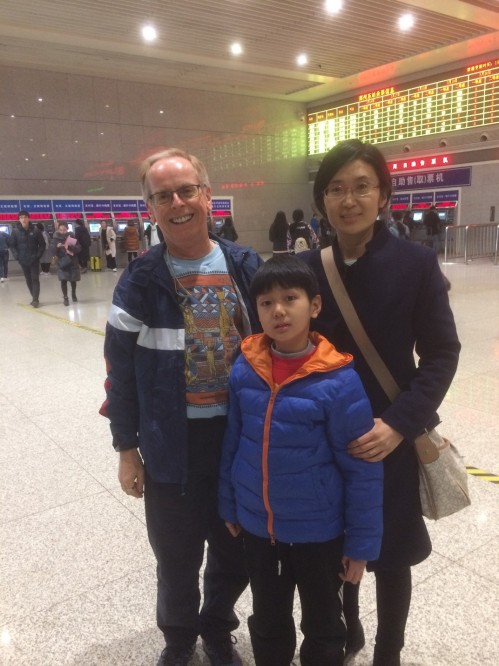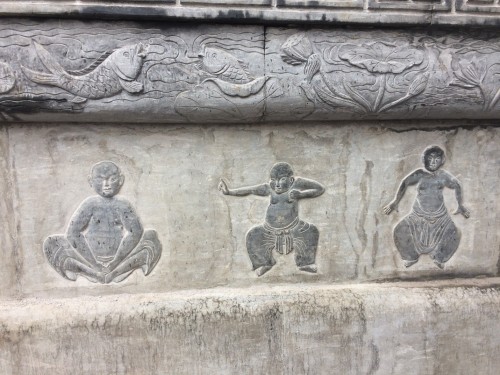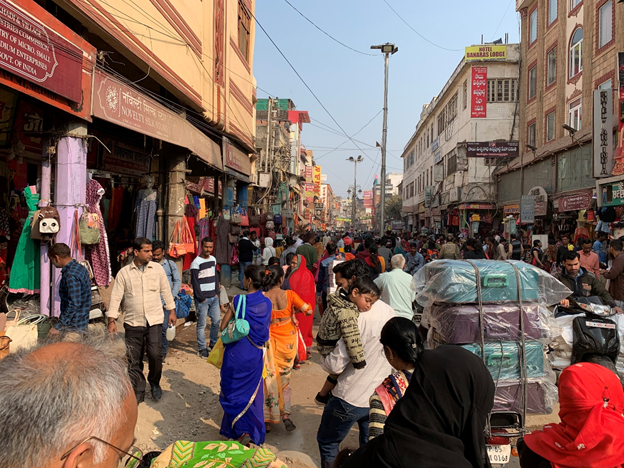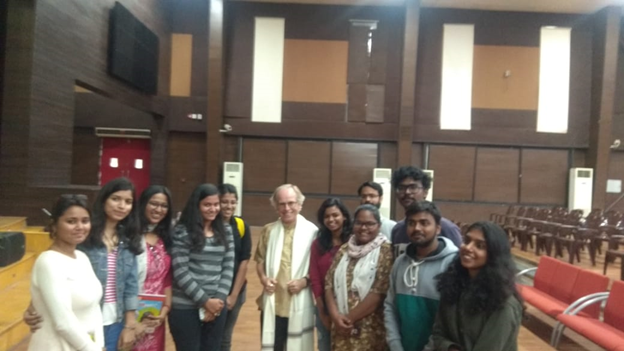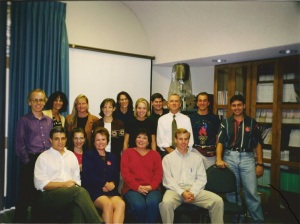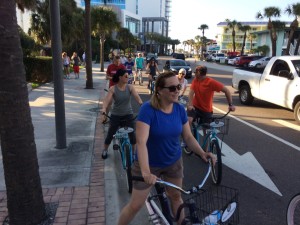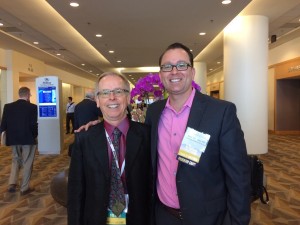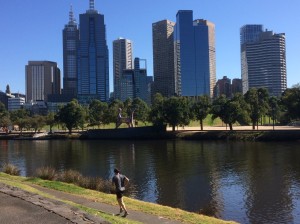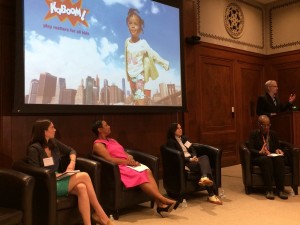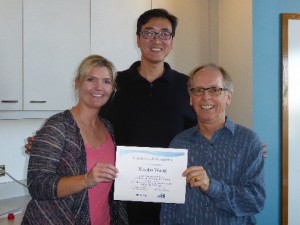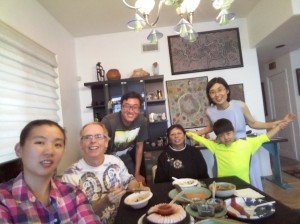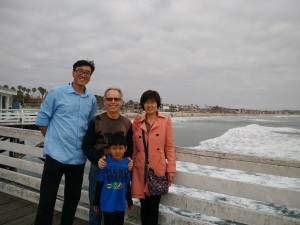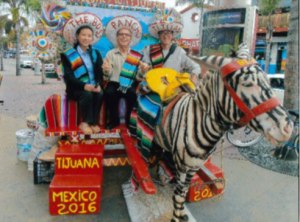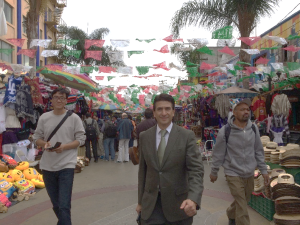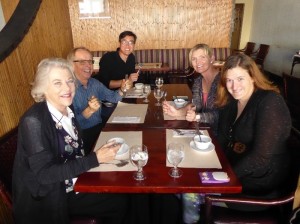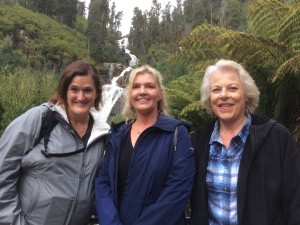Experiencing the Tibetan Community near Mundgod, India
August 7-13, 2018
I have been an admirer of Tibetan culture since the mid-1970s when I read books written by and about Tibetans. Being an isolated country for centuries and dealing with a harsh climate and the brutal invasion and ongoing oppression by China makes Tibet exotic to Westerners. At its heart is a culture built around the Buddhist religion that systematically develops spiritual enlightenment. But the aspect that has maintained my respect and fascination across the decades is the explicit effort to use their spiritual skills to improve the condition of the whole world. The Tibetan culture’s uniquely positive nature makes it especially tragic that the culture is under prolonged attack.
Despite my fascination with Tibet I have had few opportunities for direct experience of the culture. I attended a traditional dance performance in San Diego in the 1980s. I went to a concert of a young Tibetan woman singer (Yungchen Lhamo) who blended traditional and modern styles while in Brisbane, Australia in 1995. Soon after September 11, 2001 I witnessed Tibetan monks making a spectacular sand mandala at the Smithsonian Museum of Asian Art in Washington, DC with the explicit purpose of helping heal American pain. Not much more than that, other than giving to charities supporting Tibetan dissidents and exiles.
The first Tibetan person I met was a UCSD undergraduate student who worked as an intern with our research group in 2016. I talked with Lobsang Lama about my admiration for her culture, and I provided mentoring about achieving her career goal of working to improve the health of Tibetan exiles. She graduated from UCSD in 2017, and it was fortuitous that His Holiness the Dalai Lama was the commencement speaker. His plainspoken message of kindness and compassion was easy to grasp but hard to put into practice in the modern world. It is apparent that he is living his convictions by his patient and positive approach to working with the Chinese government to improve living conditions for Tibetans living in Tibet. As described in my blog about my highlights of 2017, I was selected to be among about 100 faculty members to have a brief audience with His Holiness and shake his hand. That was one of my most thrilling moments.
Lobsang’s parents attended her graduation during their first visit to US from their home in Nepal. They honored me by having lunch at my home. After graduation, Lobsang moved to the Bay Area, and I had little contact with her. That changed in mid-2018 when I received an email informing me that her brother was graduating from advanced studies at a monastery in South India. I knew that he was identified as the reincarnation of a prominent lama when her brother was a young child. He entered the monastery at age 6 years. Lobsang’s email also invited me to attend the graduation ceremony at the monastery, which would be August 5. It so happened that I was making plans to be in Australia from mid-July to the first week of August. Because I had already agreed to speak at two conferences the first week of August, I would not be able to make it to India in time for the ceremony. This was a big disappointment. But Lobsang said she and her family would remain there for some time after the ceremony, and I could still visit the monastery and surrounding community. Her brother would be happy to show me around the community and discuss his life as a lama.
I realized this was a once-in-a-lifetime opportunity to experience Tibetan culture in a meaningful way. Thus, I told Lobsang I would accept the invitation and extend my trip for another week. The time for the trip eventually came, and I spent two productive weeks in Melbourne working at the Australian Catholic University, made two presentations in the City of Gold Coast, and participated in two cardiology-related conferences in Brisbane. From there I flew to Chennai, India to begin an extraordinary week.
What follows is a diary relating my observations from my few days in India and the Tibetan settlement. I drafted most of the text while I was in Mundgod so my memories and feelings would be fresh. I apologize for the level of detail; it is probably more for my benefit than for others’. Don’t feel obligated to read everything, unless you are curious about Tibetan culture and Buddhist practices. But this is not a deep analysis of Buddhist philosophy. My impressions are more like a travelogue. I expect most readers will be more interested in the photos. There is also a labeled section about health issues related to obesity in the monastery, based on the lama’s research and my observations.
There are many photos following. Please click on them to enlarge.
August 6, 2018
My first stop in India was to visit colleagues at Dr. Mohan’s Diabetes Specialties Centre. A team there led by Dr. Anjana are collaborators in the IPEN Adolescent study, so I spent a day with them discussing publications based on their Indian data. I was treated to dinner at Dr. Mohan’s home with Anjana and her family, along with research team key members Pradeepa and Ranjani. After a delicious Indian meal, Dr. Mohan gave me a book he had written. It described his extensive and extraordinary experiences with the Indian spiritual leader Sathya Sai Baba. I was unfamiliar with Sai Baba, so Dr. Mohan told about how he first encountered this guru to millions early in life, but did not become a follower until much later. The book recounts many miracles directly experienced by Dr. Mohan, his family, and his colleagues. Eventually Dr. Mohan and his whole family became serious devotees of Sai Baba. Sai Baba is no longer living, but Dr. Mohan is a Trustee of Sai Baba’s foundation that operates clinics, hospitals, schools, and other charity programs whose services are free. All this information about such a Godly person was impressive and fascinating, and I felt that it was a well-timed nudge for me to focus on spiritual matters as I prepared to travel to a community devoted to the philosophy and practices developed over centuries of Tibetan Buddhist culture.
 In Chennai, with Dr V Mohan, Pradeepa, Anjana, and Ranjani. (Taken by Anjana’s son Pranav)
In Chennai, with Dr V Mohan, Pradeepa, Anjana, and Ranjani. (Taken by Anjana’s son Pranav)
August 7, 2018
In the afternoon I flew from Chennai to Hubli (Hubbali), which from the air was bigger than I had anticipated. I was met at the airport by Lobsang, her father, and sister Pema, along with the driver of the van. As we were passing through the outskirts of Hubli, we came upon an elaborate gate across the road. I was surprised when Lobsang said it looked like a statue of Sai Baba on the gate. I had only heard of Sai Baba the night before, and already I encountered him again.
 Sai Baba gate in Hubli, India
Sai Baba gate in Hubli, India
 En route to the Chennai airport I was perplexed by this amazing vehicle. The driver said it was “a car for death.” I took that to mean it is used in funerals.
En route to the Chennai airport I was perplexed by this amazing vehicle. The driver said it was “a car for death.” I took that to mean it is used in funerals.
 Here is where the driver sits.
Here is where the driver sits.
On the one hour drive to the Tibetan settlement near Mundgod, Lobsang delivered the good news (for me) that her brother’s graduation ceremony had been postponed to the next day. This was the event that triggered the invitation, so I was thrilled I would be able to witness it. This area in the South Indian state of Karnataka was lush and green, and we were in the rainy season. The driver let us know when we passed into the Tibetan settlement. It was mostly farm land, and a few Tibetan flags started to appear. Some of the fences were draped with colorful fabrics, and I was told the purpose was to discourage wild boars from getting into the fields. We passed through a few of the nine “camps”, or villages, that make up the settlement before arriving at a separate community of monasteries. Four monasteries are clustered together, plus related schools, foundations, cultural organizations, and a new research center built in conjunction with Emory University.
 Gaden Shartse Main Prayer Hall in the background. This is the view from my guest house.
Gaden Shartse Main Prayer Hall in the background. This is the view from my guest house.
Upon arrival I was taken to my room in a guest house that was next door to two monasteries. A great location. We then walked across the street to the residence hall (Kangtsen) led by Lobsang’s brother. He is affiliated with Gaden Shartse Monastery and Monastic University. I was reunited with Lobsang’s mother and father. For the first time I met her brother Yulting Rinpoche (whom I called by his title Rinpoche, which refers to an advanced lama), sister Pemzon who lives in Italy, and four aunts from Nepal, along with one of their sons. They greeted me warmly and made me feel at home. Before dinner I had an initial meeting with Rinpoche. He invited me to ask questions about Buddhism, and he requested that we talk about a study he had done in collaboration with fellow monks and researchers from Emory. He hoped I would find the food at the monastery to my liking, but he expressed concern that the typical monastery diet was high in carbohydrates. The first of many family-prepared meals was a real pleasure, with several vegetarian curries—comfort food for me. Most of the meals we had were cooked by a combination of family members and monks in the Kangtsen kitchen. We ate outdoors on the top floor of the building that had a roof but no walls—a common design in the tropics.
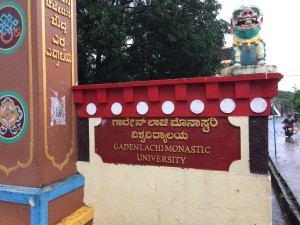 Part of the Gaden Shartse Monastery complex.
Part of the Gaden Shartse Monastery complex.
August 8, 2018
I did not have a good idea of what would happen at the graduation ceremony, but I was told to be ready before 6am. I met the family at the entrance to the main Gaden Shartse Prayer Hall that was next door to my guest room. The graduation ceremony (Geshe Tonko) had already started, and it was integrated into a version of morning prayers (Daja). Instead of going into the main hall we went upstairs to a room overlooking the Prayer Hall below. It was a wonderful vantage point for photos. The room was set up for our group to have breakfast. In addition to the family, there were monks ranging in age from 5 years to middle age. We had the same breakfast the monks were having below while the ceremony was ongoing. There was a thick flatbread call pah-lay that was served with butter and jam. Everyone got a boiled egg and black tea with milk and butter. “Butter tea” is the national drink of Tibet.
 View of the Prayer Hall from the upstairs room where we had breakfast.
View of the Prayer Hall from the upstairs room where we had breakfast.
 Yulting Ripoche, his father, his mother, and sister Lobsang.
Yulting Ripoche, his father, his mother, and sister Lobsang.
Then we went downstairs, took off our shoes, and entered the Prayer Hall. Everyone did three prostrations at the door to honor Buddha. Experiencing a Tibetan Buddhist ceremony has been a goal of mine for decades. I knew the prayers were chanted or sung, and the singing sounds strange to Western ears. Much of the singing is guttural low tones sometimes called throat-singing, the music is often arrhythmic (no discernable beats), and sometimes all the monks join in the chanting. From the breakfast area above I was able to see some of the monks sitting in lines as well as some of the elaborate and colorful decorations in the assembly room. Finally, I was in the midst of the full spectacle of the ancient rituals.
 Some of the statues in the main Prayer Hall.
Some of the statues in the main Prayer Hall.
In the Prayer Hall hundreds of adult monks were sitting on rows of cushions. They wore red robes and saffron yellow draping. The decorations featured massive colorful hangings of embroidered cloth, large paintings of the Buddha and other figures, and many gold-covered statues at the front of the room. There is a large seat/throne at the front reserved for the Dalai Lama who makes annual visits to all the monasteries here. The constant music and chanting, along with the visual splendor and incense make the ceremony a treat for the senses. Of course, entertainment is not the purpose. The rituals have been designed over centuries to elevate the spirit, inspire devotion to Buddha, and achieve a variety of goals.
 Half of the Prayer Hall during the graduation ceremony. The main throat-singer is singing into the microphone.
Half of the Prayer Hall during the graduation ceremony. The main throat-singer is singing into the microphone.
Rinpoche was graduating from 18 years of study at the Gaden Shartse Monastic University, but he plans to continue his studies another 7 or 8 years to obtain the equivalent of a PhD. The Geshe Tonko had nothing in common with university commencements I have witnessed. The graduation was conducted as part of a prayer ceremony, or puja. Praying, singing, and chanting were continuous throughout the three-hour ceremony. Surprisingly to me, Rinpoche was the only graduate being celebrated. His family sponsored the ceremony and played active roles. I was expecting to sit in the back of the room, observe everything, and try to stay out of the way. As another surprise, I was constantly invited to take part in all the activities along with the family. Though this made the event even more special than I could have imagined, I had to pay attention to those in front of me to know what to do, and I was worried I would make a big mistake.
 Making offerings to a high lama during the graduation ceremony.
Making offerings to a high lama during the graduation ceremony.
Here are some of the activities the family did during the ceremony. They offered white scarves and envelopes with money to the senior lamas, and laid scarves and money in front of several of the statues and the Dalai Lama’s seat. We visited a small room near the statues at the front of the hall that was the Room of the Protectors. While offering scarves and money we asked for protection from harm for Rinpoche, the monks, and the whole world. After that we went to main floor, and the family gave small gifts of money to each of the hundreds of monks. Then we went to nearby buildings where younger monks were in school. Family members went into all the classrooms to give the children and instructors some money. We gave money to everyone working in the kitchen. Giving is considered a highly virtuous act, and because monks are not paid, gifts are their only source of income.
 Giving offerings to young monks in a smaller Prayer Hall.
Giving offerings to young monks in a smaller Prayer Hall.
I was awestruck during the whole ceremony by the generosity of the family to the monastery community—and to me. I was welcomed to participate fully, which made the entire event a vivid lifelong memory. I am deeply grateful for the Lama family’s incredible welcoming spirit.
 At the entrance of the Main Prayer Hall during the graduation ceremony.
At the entrance of the Main Prayer Hall during the graduation ceremony.
 With Yulting Rinpoche.
With Yulting Rinpoche.
 Yulting Rinpoche and family, including parents, sisters, and aunts.
Yulting Rinpoche and family, including parents, sisters, and aunts.
After a little rest, we had a great lunch back at the Kangtsen, but the day was far from over. Rinpoche went to the prayer room in his Kangtsen and sat on his high seat. For the rest of day and into the night a never-ending stream of lamas and monks came to congratulate him and bless him with scarves and money. Most made additional offerings to the Dalai Lama, whose photo and seat were prominent in the room. Sometimes they gave offerings to the family, and even to me.
 Yulting Rinpoche accepting congratulations from monks of all ages while his family looks on.
Yulting Rinpoche accepting congratulations from monks of all ages while his family looks on.
 Gifts were piling up throughout the day.
Gifts were piling up throughout the day.
I was very motivated to take photos of all of these special events, to help me remember and to tell the story. Fortunately, there were no restrictions at all on taking photos or videos. Because most family members were at least as excited to take photos as I was, I felt comfortable the whole time. Now I am happy I can share some of the photos with readers of this blog.
The whole day was a fantastic blessing.
 We got a ball for this 5-year-old monk who arrived from Bhutan only 3 months earlier.
We got a ball for this 5-year-old monk who arrived from Bhutan only 3 months earlier.
August 9, 2018
I started this day by attending the morning prayers, held in the main Gaden Shartse Prayer Hall. This time I did sit in the back and concentrate on taking everything in. The praying, singing, and chanting were similar to the day before, with virtuoso performances by the throat-singers. I got a sense of the rhythm of the ceremony. There were intense parts with at least two throat-singers being amplified so the vibrations filled the Hall, and the effect was dramatic. There were also quiet parts, with different lamas chanting. It was an honor to experience this centuries-old ceremony, and it transported me to a more peaceful state of mind.
After breakfast the family and I took a bus to visit nearby monasteries, including the awe-inspiring Drepung Loseling Monastery. It was one of the leading monasteries in Tibet but was demolished by the Chinese. It was re-established here in 1980. The interior was spectacular, with detailed carvings decorating the doors and columns. The statues were the biggest of any of the monasteries I saw. Lobsang’s sisters pointed out some impressive art pieces that seemed to be part sculpture and part painting. In fact, they were constructed with painted butter. We went to another monastery, then we visited a shop where I picked up a few souvenirs.
 This is made from carved butter.
This is made from carved butter.
 Inside a Prayer Hall at another monastery.
Inside a Prayer Hall at another monastery.
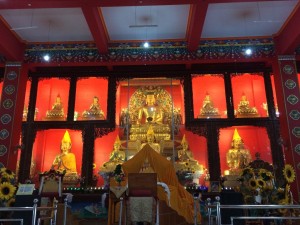 Drepung Loseling Monastery, Main Prayer Hall statues. All are covered in gold.
Drepung Loseling Monastery, Main Prayer Hall statues. All are covered in gold.
 A detail of the intricately carved and painted door frame at the Main Prayer Hall at Drepung Loseling Monastery.
A detail of the intricately carved and painted door frame at the Main Prayer Hall at Drepung Loseling Monastery.
Observations about health issues in the monastery
In the afternoon Lobsang and I learned about Rinpoche’s research project. It was so interesting that Rinpoche’s work group had decided last year to do a study about the health of the monks, focusing on obesity, diet, and physical activity. They devised a short survey, collected data from 105 monks aged 16 to 40 years, and had the data analyzed by their colleagues from Emory University. There were several findings I thought were particularly important. The mean BMI was about 26, which is in the overweight range, and by Asian standards would be considered obese. Frequency of walking was negatively correlated with BMI, and frequency of eating after 9pm was positively correlated with obesity. Thus, in this sheltered and unique environment, they are seeing the same patterns of health problems as the rest of the world. They have already started developing solutions. Many of the monks take walks, so they are discussing how to encourage and expand this practice. The small shop in the heart of monastic community has banned potato chips and a few other junk-food items. There is a fruit and vegetable market every day. However, they have major challenges about diet. There is a shop next to the market with a Coca-Cola sign on the outside that mainly sells sodas. I was told that sugar-free sodas are very difficult to find in and out of the Tibetan community. As Rinpoche told me the day I arrived, the diet is carbohydrate-intensive. In addition to the daily breakfast bread (which I learned is made with whole wheat flour), white rice is a staple, and I saw fried dough served to the monks during an evening prayer ceremony. I did not observe fruits or vegetables served during ceremonies. However, the family meals at the Kangtsen included many delicious vegetable dishes. Regarding physical activity, as far as I can tell there is no organized physical education for the young monks. But as I am drafting this at the guest house, there is a group of pre-teen monks playing soccer outside my window with a small ball in the late afternoon in the rain. This is a start.
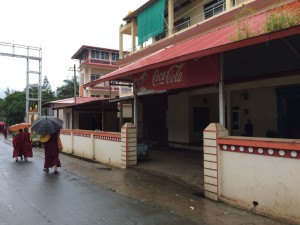 The canteen in the middle of the monastery complex.
The canteen in the middle of the monastery complex.
 This is the (pah-lay) bread that is served to the monks for breakfast.
This is the (pah-lay) bread that is served to the monks for breakfast.
A particular challenge is the amount of sitting that is an essential part of the monk’s life. Prayer ceremonies are 2-3 hours in length, and though there are pauses for meals, the monks remain seated. Meditation is central to Buddhism and cannot be changed. Thus, it will take creativity to adjust the monk’s routine to deal with current health risks. But it seems the monks have devised some solutions. At the first morning prayer session I attended, I was alarmed when all of a sudden a couple of dozen monks suddenly jumped up and literally sprinted out the door. I thought something terrible had happened outdoors. In a few minutes I understood these monks were getting breakfast to bring to the rest of the monks. It is a longstanding tradition to race to be the first to bring the food or tea back to the prayer hall. Both child and adult monks seemed to really enjoy this burst of activity. However, it was just about the only vigorous activity I saw among the monks. This gives me hope there will be other creative solutions to find time for activity, or at least breaks from prolonged sitting, throughout the day.
Special ceremonies for my late wife Shemi
After discussing his research project, I made donations to both the monastery in general and Rinpoche’s Kangtsen. I explained that I wanted to sponsor a ceremony in memory of my wife Shemi who died almost exactly two years prior to my visit (www.shemiamarsisallis.com ). I consider Tibetan Buddhists the world’s experts in death and the afterlife, so this was an opportunity I could not miss to show my love and concern for Shemi’s welfare. Rinpoche surpassed my expectations by arranging for three pujas for Shemi.
At night I attended a special ceremony to protect the monks and all living beings from harm. The ceremony was called Kang-so-chenmo, which means The Prayer to the Five Great Protectors. I learned that to help achieve their spiritual goals, Tibetan Buddhists feel they can be more effective by working toward a more conducive environment by contributing to peacefulness, reducing suffering, and improving lives worldwide. The singing and chanting were similar to prior ceremonies. However, the music was dramatically enhanced by the use of drums, cymbals, and horns. Tibetan horns are impressive to the ears and eyes. They look like they are eight feet long, are straight, ornately decorated, and they always seem to be played in pairs. They only sound two notes, but they are powerful notes. I attended about half of the three-hour ceremony. The Tibetan Buddhist dedication to praying for betterment of the whole world is the aspect of this unique religion that has always struck me as the most important. I felt fortunate to be able to experience such a ceremony, that I’m sure benefitted me in ways I can’t understand.
Another unforgettable day.
 The Prayer to the Five Great Protectors, at Gaden Shartse Monastery, with drums.
The Prayer to the Five Great Protectors, at Gaden Shartse Monastery, with drums.
 Here are the horns that make a magnificent sound.
Here are the horns that make a magnificent sound.
1-MINUTE VIDEO:
Monks at Gaden Shartse Monastery chanting and playing drums in a Tibetan Buddhist prayer ceremony
1-MINUTE VIDEO:
The amazing horns during a Tibetan Buddhist prayer ceremony at Gaden Shartse Monastery
August 10, 2018
Rinpoche had arranged for special prayers for Shemi at an afternoon puja in the main Gaden Shartse Prayer Hall. Rinponche’s attendant, Ngawang Chakzod, guided me through the ceremony, with more help from Lobsang. There were similarities to Rinpoche’s graduation ceremony. I put scarves and gave offerings to the high lamas, the statue of Buddha and other statues, and to the gods in the Room of the Protector. I gave money to all the monks, including children in classrooms and the kitchen workers. I can see how Buddhists are so enthusiastic about giving in this way, because you see many, many smiles. It was a blessing for me to experience the puja from the perspective of a full participant.
I should mention what it means to be Rinpoche’s attendant. As a reincarnated lama, Rinpoche has more responsibilities and higher expectations than other monks, as well as extra privileges. Because he left his family and entered the monastery at age 6, Rinpoche needed adult nurturing and guidance. Chakzod is the lama who took on this responsibility as a lifelong job. At the beginning, Chakzod acted as both a spiritual guide and substitute parent. As Rinpoche developed, Chakzod’s role changed. Eighteen years later Rinpoche has become leader of the Kangtsen, and Chakzod provides spiritual and logistical support. That’s why one of his duties was guiding me during this ceremony.
I went with the family on a walking tour of a nearby monastery where a puja was in progress. It was interesting to see the similarities and differences of the assembly halls and the ceremonies.
August 11, 2018
The second puja for Shemi was led by Rinpoche in the assembly room in his Kangtsen. This Chod-bul Puja was attended by about 20 monks who live there, ranging in age from 5 to maybe 30 years. The ceremony consisted mainly of group chanting, with the older monks reading from books and the young monks just listening. I and several family members gave money to the monks. Chakzod also bought packages of food that were distributed to all the monks.
 This is a special ceremony for my late wife Shemi at the Kangtsen.
This is a special ceremony for my late wife Shemi at the Kangtsen.
 Some of the younger monks in the Kangtsen.
Some of the younger monks in the Kangtsen.
The third puja for Shemi will occur in February 2019. This is a special ceremony for people who have died recently, and their names will be read during the prayers.
 Scene on a walking tour around the monastery community.
Scene on a walking tour around the monastery community.
During the afternoon a monk led the family and I on a walking tour of nearby monasteries. One of them has large grounds, mainly used for overflow crowds when the Dalai Lama visits. The largest of the monasteries we visited was inaugurated by Ghandi, and there is a statue of Ghandi in front of the monastery.
 Lobsang’s father and Lobsang, with statue of Ghandi and Tibetan flags in the background.
Lobsang’s father and Lobsang, with statue of Ghandi and Tibetan flags in the background.
 Lobsang and myself by a mural at a smaller monastery.
Lobsang and myself by a mural at a smaller monastery.
That night Rinpoche guided Lobsang, Pema, and myself on a visit to a debate session. Debating a wide range of topics in Buddhism is an important part of a monk’s life. I asked Rinpoche many questions to understand how the debates worked. Buddhist debates are an exchange of ideas and information, not a competition. It was interesting to me that they often provide citations to boost the credibility of the points they make; knowing the Buddhist literature is highly valued. No one is judging, and it is perfectly fine for one debater to be convinced of his partner’s position. Logic and knowledge gained from reading are highly valued, because Buddhism is considered to be a spiritual science that can be improved—it is not based on dogma. The first set of debates had one debater standing and the other sitting, then they changed to a group format. There was a lot of back-and-forth discussion, in contrast to timed speeches and formal replies in Western debating. One key feature of Buddhist debating can be startling at first. The standing debater often emphasizes key points by vigorous claps. Rinpoche told me that younger debaters are more aggressive with their claps because their logic and knowledge are not well developed. More mature debaters tend to have less dramatic claps.
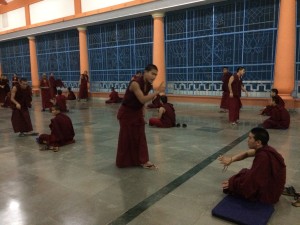 At the debates between monks.
At the debates between monks.
August 12, 2018
This was a quieter day. The family went on a sightseeing trip that involved about 6 hours of driving, so I chose to stay at the monastery. In the morning I attended pujas at 6am and 10:30am that were quite similar to each other. The adult monks were expected to practice meditation today, so the ceremonies were attended only by the young monks and were held in a smaller Prayer Hall next door to the main one. The decoration was less elaborate, but there were similar colorful embroidered cloth hangings. The ceremony was much simpler. There was no music. Some older monks chanted, but there was little throat-singing. Meals were served at both ceremonies, and as you can imagine the young boys serving the food were very engaged in the running I described above. Most of the ceremony consisted of a debate between two senior monks. There was a different pair of debaters for each puja. They walked up and down the central aisle as they debated. Though this seemed like good modeling and instruction for the younger monks, I think many of the monks could not hear the debating because it was not amplified. There was also a fair amount of noise because the boys grew restless, started talking to each other, and acted like little boys everywhere.
 Morning prayers just for young monks, at the smaller Prayer Hall of Gaden Shartse Monastery.
Morning prayers just for young monks, at the smaller Prayer Hall of Gaden Shartse Monastery.
 Bringing tea to the young monks during breakfast.
Bringing tea to the young monks during breakfast.
 Serving soup for lunch to the young monks.
Serving soup for lunch to the young monks.
1-MINUTE VIDEO:
Young monks serving breakfast during a Tibetan Buddhist prayer ceremony at Gaden Shartse Monastery
Jangchup Gyaltsen, a 16-year-old monk from Bhutan with very good English helped me with breakfast and lunch. He taught me how to make tsampa for breakfast. It is a dough made from barley flour, butter, and hot water. As I was warned, it was bland. For lunch we walked to the nearest cluster of shops, which was about 30 minutes away. We ate momo at a small restaurant. Momo is a national dish, which is steamed dumplings. Mine had spinach inside, but meat-filled ones are common. We got thoroughly wet walking in the rain back to the monasteries, but that was OK with me because it was my longest walk of the week.
 Good friends.
Good friends.
 Murals in one of the camps, with words of wisdom on the left. The one on the right depicts Tibet, with prayer flags and the Himalayas.
Murals in one of the camps, with words of wisdom on the left. The one on the right depicts Tibet, with prayer flags and the Himalayas.
When the family returned from their outing, we had a delightful vegetable soup with home-made whole wheat noodles. After dinner I expressed my deep gratitude for the kindness and generosity all of them had shown me throughout the week. I was moved by how they had accepted me and treated me as a family member. I offered a scarf to everyone as a symbol of my thanks, and I had small gifts for some.
August 13, 2018
My last day at Gaden Shartse Monastery was short and bittersweet. I had breakfast with everyone, then packed my bags. I came back to the Kangtsen to say goodbye. I was humbled when Rinpoche and others gave me some beautiful Tibetan handicrafts as gifts, including a funny backpack celebrating yaks which are the most common farm animal in Tibet. It was difficult leaving behind this unique place where I felt so at peace. The world needs the healing that Tibetan Buddhists specialize in, so it is in everyone’s interest that this special culture continues to thrive. After saying farewell I began my long journey back to San Diego.
 Tibetans have a sense of humor. Maybe it is a subtle comment that we Westerners talk too much and listen too little.
Tibetans have a sense of humor. Maybe it is a subtle comment that we Westerners talk too much and listen too little.
 Chakzod, an old friend of the family, and Lobsang wish me farewell.
Chakzod, an old friend of the family, and Lobsang wish me farewell.
Epilog
The special nature of my experience with the Tibetan pujas became more clear to me when I learned that the ceremonies are not regular worship services for lay Buddhists. The ceremonies are for the monk’s development and are designed to benefit the whole world. People in the community mainly attend pujas at the monastery when the Dalai Lama visits. Otherwise they pray at small shrines in their homes or neighborhoods.

It is encouraging to me that the Tibetan culture and religion are surviving the Chinese occupation of Tibet. Though I can’t compare what I saw in this Indian settlement to life in Tibet itself, the Buddhist-centered culture in the Mundgod settlement is alive, thriving, and fulfilling its unique role as a force for spiritual development, benefitting the whole world, and providing an alternative to the dominant materialistic orientation. I am more motivated than ever to do my part in protecting and preserving this culture and amplifying its positive and healing impact on the world.
NOTE: If you are interested in making a donation to support the work of the Gaden Shartse Monastery or Rinpoche’s Kangtsen, please contact me. There is no website to make this easy, but I can put you in contact with people there who can assist you in making a transfer through Western Union.
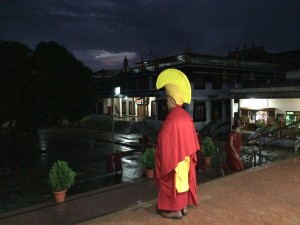 This lama is the disciplinarian during prayer ceremonies.
This lama is the disciplinarian during prayer ceremonies.


